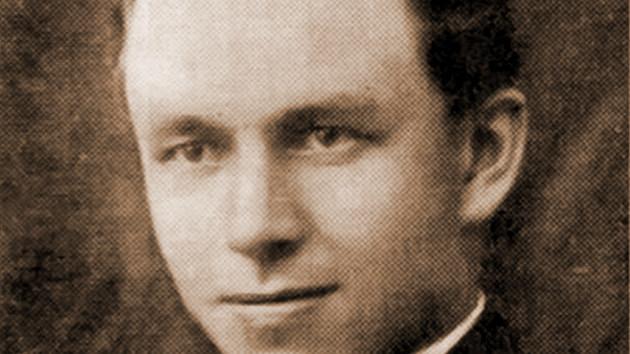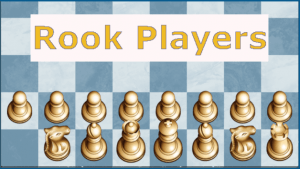
Martin Villemson's Gambit
Many openings go by various names. The opening(s) we'll be looking at below not only go by many names, but the situations, like gambits themselves, can get messy, muddy and uncertain very quickly.
The title of this article is Martin Villemson's Gambit. The "Oxford Companion to Chess" (OCC) says: "Martin Villemson (1897-1933) of Parnu. Estonia, editor of the chess magazine "Eesti Maleilm," played it in the first International Correspondence Tournament of the 'Deutsche Schaihzeitung,' He was a strong correspondence player and may well have inspired Keres to try that activity, in which they overlapped."
The OCC gives the Villemson Gambit as: 1.e4 e5 2.f4 exf4 3.d4.
The "OCC" also says "The Villemson Gambit in the KGA, sometimes called the Steinitz Gambit, perhaps because of its resemblence to 614, but Steinitz did play it in a consultaion game in 1880, or the Krause, Polerio or Rosentreter Gambit. "
Also according to the "OCC," the Polerio Gambit differs significantly in it's strategy: "The Villemson Gambit given by Polerio, with a different theme. After 1.e4 e5 2.f4 exf4 3.d4 Qh4+ 4.g3 fxg3, White makes a king's leap - Kg2 - which was then a permissible alternative to castling."
Now the Rosentreter Gambit is similar but harldly the same thing, even as given by the OCC itself: 1.e4 e5 2.f4 exf4 3.Nf3 g5 4.d4.
As mentioned in the OCC, Steintiz did play this opening in a consultation game in 1880 (below) but the name Steinitz gambit usually refers to a gambit in the Vienna that has similar moves, hence the confusion. In 1883, when Morphy was informed that Steinitz was in New Orleans, Morphy, revealing his continual interest in chess and dismissal of Steinitz, supposedly replied, "I know it. His gambit is not good."):
1.e4 e5 2.Nc3 Nc6 3.f4 exf4 4. d4.
The OCC, as noted above, maintains that Martin Villemson played 1.e4 e5 2.f4 exf4 3.d4. in the first International Correspondence Tournament sponsored by the "Deutsche Schaihzeitung." I wasn't able to find such a game. However, from this tournamnent which seemed to stretch between 1930-2, I did find this game:
The difference is that White inserts 3.Nc3, making this a kind of blended Polerio-Steinitz opening. This opening is commonly called the Keres-Mason Gambit or the Pärnu Gambit. Since Keres and Villemson seemed to have explored this opening more so than the Polerio, it also seems that this opening would be more reasonably called the Villemson-Keres. Here it is, played by Paul Keres in a correspondence game in 1933 (Keres would have been only 17 at the time.)
Martin Villemson also played the same opponent with the same opening around the same time, but with a better result:
At this point, the reasonable question might be:
Who was Martin Villemson?

Villemson is rather obscure today, particularly since Estonian chess wasn't very exciting until the apprearance of Paul Keres. In fact, Keres, who was born in 1916, took up correspondence chess precisely because OTB games and tournaments were so scarce. Martin Villemson, almost 20 years Kere's senior, was Kere's inspiration to become a correspondence player and chess problemist.
Villemson (born November 9, 1897 in Sauga, Pärnu County; died June 22, 1933 in Pärnu, Estonia), who was left fatherless as a youth and moved from Sauga to Pärnu to attend school, eventually working as an apprentice baker, might be thought of as the Petroff of Estonia since he almost single-handedly promoted chess in an area somewhat barren of that pursuit. In the 1920s, Martin Villemson started chess columns in two newpapers, the "Päevaleht" ("Daily News") and the "Vaba Maa" ("Free Country"). More importantly, he self-published the first chess periodical in Estonia, the "Eesti Maleilm: Eesti ja Rahvusvahelise Maleeu Häälekandja" ("Estonian Chess Talk: The Estonian and International Chess Journal"). "Eesti Maleilm" ran for 7 issues from January 1932 (actually printed in April) until Villemson's death from tuberculosis the following year. There is an anecdotal story surrounding his death. It's said that Villemson was conducting a correspondence game with a gentleman form Hungary. The Hungarian died from the disease that would also claim Villemson. It's been suspected that that disease had ironically been delivered to Villemson through the mail. In 1932 Villemson also published a 12 page pamphlet with the results from the "Denken und Raten" (D.U.R.) international problem tournament ("Denken und Raten" was a problem/puzzle/game magazine that appeared between 1928-35).
["Eesti Maleilm" was constantly plagued with production and financial problems. As mentioned, the "January issue appeared in April. The February issue appeared in June; March in August; April and May in November and June in January 1933; January in February and February in March. Paul Kere's began a chess magazine called "Eesti Male" in 1936.]
Villemson lived in Pärnu. From 1930-34, the years he was also the Estonian youth champion, Keres attended the Pärnu Kuninga Tänav Põhikool, then the Pärnu Gymnasium for Boys. During that time they were thought to have explored what is now called the Pärnu Gambit or the Keres-Mason Gambit shown above.
Villemson and Keres played together in correspondence games. The only example I could uncover is this QGD draw:
Martin Villemson was also a rather prolific problemist and encouraged Kerse along those lines. Below are a couple of Villemson's problems:
Below are two Keres-Mason Gambit correspondence games, both against Janis Vilkens (Wilkens).
Here is the Steinitz Gambit which is confused with the Polerio :
The Villemson Gambit: 1.e4 e5 2.f4 exf4 3. d4 isn't often played, but from the number of games I've examined in various databases, it seems that 3...d5 and 3...g5 have given Black the best results, while 3...Qh4+ and 3...Nf6 have given White better results.
One of the most prolific practioners of this opening is Kamran Shirazi, the Iranian born, American/French IM who is known for embacing the unusual (In individual games, Shirazi has beaten players such as Lev Alburt, Nick deFirmian, Bent Larsen, Gata Kamsky, Anatoly Lein, Max Dlugy, John Peters, Gary Lane, Joel Benjamin, Jeremy Silman, Susan Polgar, Eric Schiller and Mark Ginsberg). Below are several of his games employing the Villemson Gambit:






